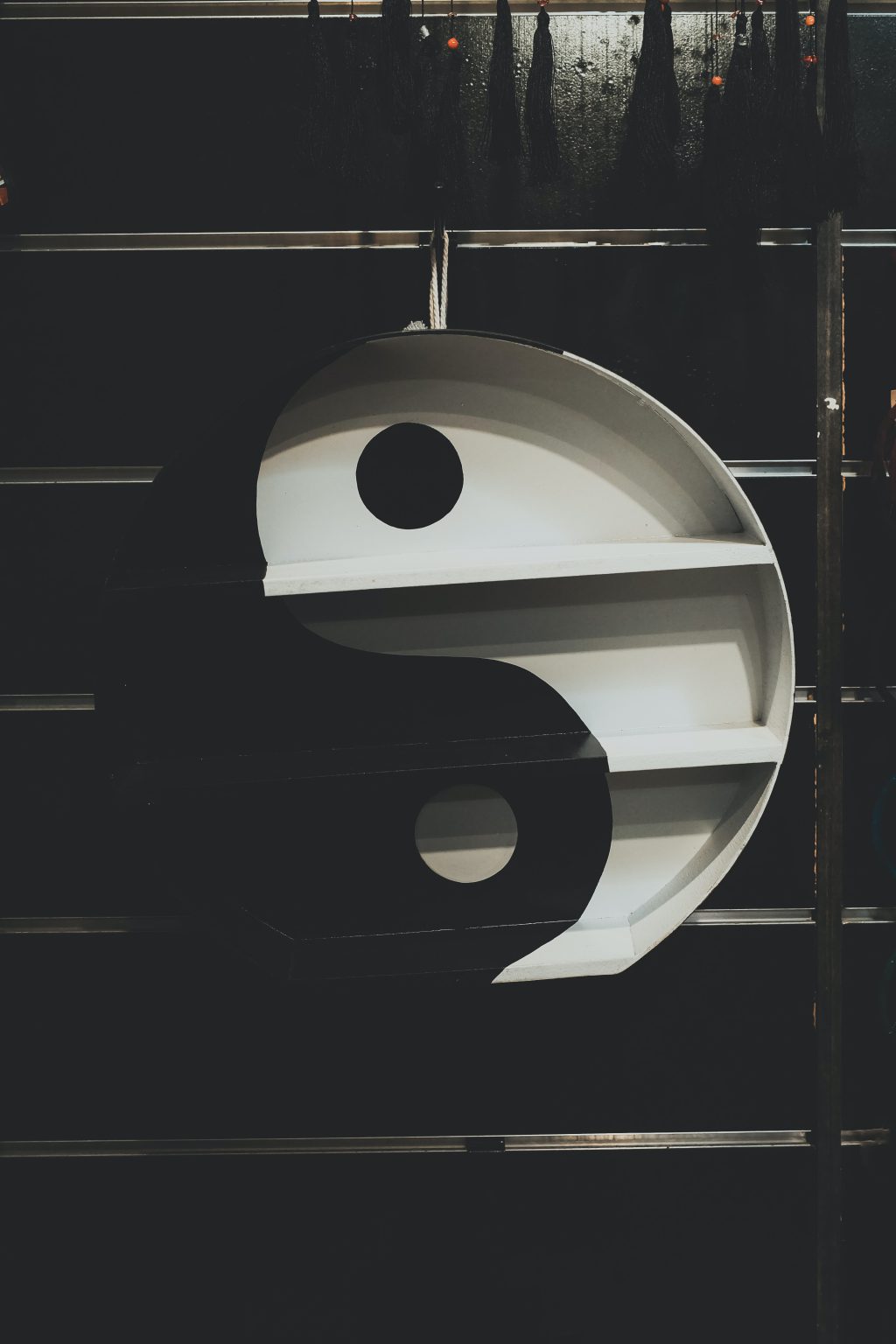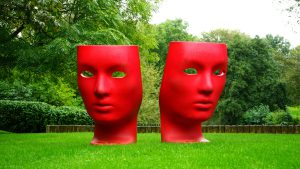
The Hindus say that without Shakti, the personified feminine life force, Shiva, who encompasses the masculine ability to act, becomes a corpse. She is the life energy that animates the male principle, and the male principle, in turn, animates action in the world.
According to Carl Jung, the psyche was composed of three components: the ego, the personal unconscious, and the collective unconscious. The ego, in its multiplicity, represents our consciousness. The shadow, in its multiplicity, represents our unconscious. And the archetypes represent our collective unconscious.
Yinyang Symbol
The archetypes animus and anima emerged as Jung observed the mingling of his male and female clients, in the hopes of understanding the human condition in a deeper more self-actualized way. The best way to imagine the anima animus is to picture a yin-yang in your mind. The anima is the black dot on the white side and the animus is the white dot on the black side. Men are like walking white sides with black dots. Women are walking black-sides with white dots. An individuated man will have a more prominent and magnanimous black dot, just as an individuated woman will have a more prominent and magnanimous white dot.
Yinyang Symbol
The anima is the unformed feminine that’s forming within a man. The animus is the unformed masculine that’s forming within a woman. The psychological unity enables us to think of ourselves as individuals as in some ways vulnerable (Feminine/Shakti) and in other ways robust (Masculine/Shiva), but never either/or (or neither/nor). The Eternal Feminine is all that is vulnerable and pregnable within us, all that is wild and fertile: our inner garden. The Eternal Masculine is all that is invulnerable and impregnable within us, all that is structured and firm: our inner strength. Our full potential as individuals, whether male or female, is an amalgam of these forces, and a balancing of these sacred energies.
Jung’s goal with developing the archetypes anima and animus was the unburying of the wild and innate aspects of the self. It gave us something to leverage the soul against ego, an existential tactic that cracks open the ego so that soul can emerge authentically. It gives us a door to open into the deeper self. This deeper self is the health of all humans, the balance between nature & the human soul, yin & yang, man & anima, woman & animus. When Man does not meet anima and Woman does not meet animus, only one-dimensionality reigns. But when anima meets Man and animus meets Woman, the tacit, prescient, visceral self becomes multidimensional.
Animus/Anima archetypes in Jungian psychology dynamic balance even more amazing are the alchemy that occurs when a woman’s animus engages authentically with a man’s anima. Paraphrasing Jung, No man can converse with a woman’s animus for five minutes without becoming vulnerable to his anima. And so, no woman can converse with a man’s anima for five minutes without becoming vulnerable to her animus. And suddenly our romantic relationships are deeper than we could have imagined before. We are suddenly able to tap the philosopher-stone of her animus with the cornerstone of his anima.
This kind of multidimensional power opens up everything, cracking our old, stagnant worldview right down the middle and revealing that everything is connected just as everything is moving. Shiva moves in and out of Shakti. The sacred masculine moves in and out of the sacred feminine.
Darkness moves in and out of light, inner moves in and out of outer. Everything moves in and out of nothing. It’s all one big beautiful bouncing dance between the God-that-forgot-it-was-God within him and the God-that-forgot-it- was-God within her.
Thus the concepts of shiva shakti, Prakriti and Purusha, and Yinyang represent the same reality. They symbolize that enraptured state where separateness is no more. Indian philosophical sages admit it as “the state of nirvana, samadhi, perfect oneness, moksha or enlightenment”. The blend of dualities thus engenders ‘extra’ power. A man like Jesus can never reach the heights of a leader without integrating either fully or partially all the faces or emotions of both male and female sections.





